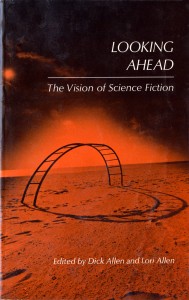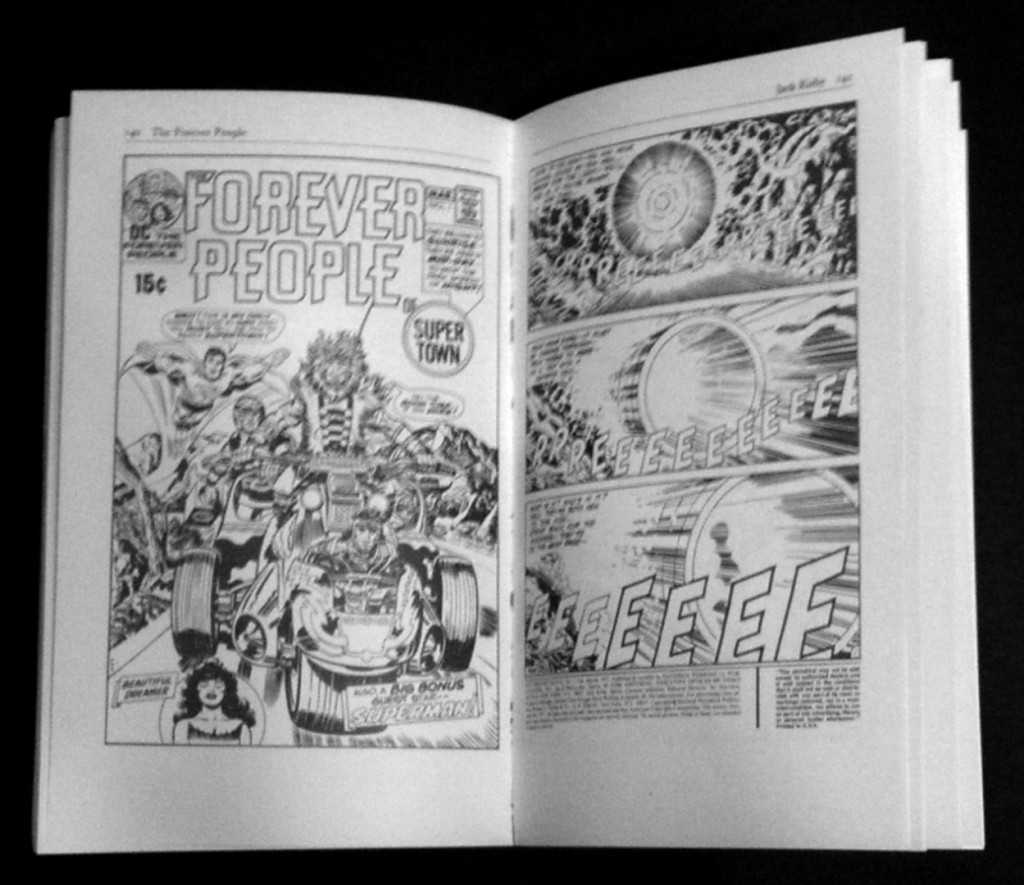Thanks to a Christmas party conversation I had with Kenichi Sugihara, of the band Stars Bars and Mars, the Kirby Museum now has a copy of what appears to be the first US reprint of Jack Kirby’s story “In Search Of A Dream!” (which was first published in National Periodical Publications’ (DC Comics) February 1971 Forever People 1).
The publication?
Looking Ahead: The Vision of Science Fiction. Edited by Dick Allen and Lori Allen. Published by Harbourt Brace Jovanovich in 1975. ISBN 0-15-551184-X.
Here’s a link to buy the book via Amazon, with a small percentage going to the Kirby Museum.
Described in its preface as “a multipurpose sourcebook/anthology designed for use in college Freshman English courses, Science Fiction courses, and courses in Studies of the Future,” Looking Ahead is organized into five sections: “About Now,” “Earth Bound,” “Breaking Outward,” “Aftermath,” and “Theories, with “”The Forever People” in the “Earth Bound” section between C.M. Kornbluth’s “The Marching Morons” and Robert Frost’s “The Star-Splitter.”
The Forever People’s introduction, on page 139:
“Science fiction is a form of popular literature and as such links up with other media of pop culture, such as comic books, film, and television. Frequently these more visual media borrow their story lines and characterizations from the more verbal medium and in the process bring about a transformation. For example, there are comics in which previously published SF stories such as Frederic Brown’s “Area,” are illustrated and given surprising new dimensions. There are also comics in which as single character or set of characters based on an original work of fiction undergo a series adventures more or less in keeping with the original author’s work. The award-winning comic Conan is a prime example. Finally, and perhaps most interesting, are those comics in which their creators invent their own SF heroes. Superman was a first. The Forever People are in comic book limbo, publication having been indefinitely suspended, but they are an indication of the creative imaginations available in the second golden age of comics. Jack Kirby is an almost legendary figure of the comic book industry.”
Page 165 contains study questions:
- Do you think the symbolism of “boom tube” and “mother box” would be lost on young readers?
- Are the Forever people outdated? Do they still function as credible saviors in the context of the 1970s?
- What does Darkseid symbolize?
- What does the Infinity Man symbolize?
- Is Superman a tragic figure? Why?
- Use this comic as a starting point for discussion the relationships between science fiction and mass culture.
- Are the comic book pictures in “The Forever People” similar to ones you create in your mind as you read as unillustrated science fiction story? In what ways are they similar, if indeed they are? If not, how are they dissimilar?
Looking Ahead has a section at the end called “Topics for Shorter and Longer Papers.” One topic involves “In Search Of A Dream!”:
21. Comic books such as Forever People qualify as pop literature. Reread the selection and state the storyline in one or two sentences. Do the same with one of the SF stories in the book. Are there similarities in simplicity or complexity of plot, characterization, theme? Do you have any difficulty in telling which are the “good guys” and which are the “bad guys?” What about plot development? Do you feel any uncertainty about where the story is “going?” Is the point of the story unclear at any time? Compare the SF story and the comic to Hawthorne’s “The Artist of the Beautiful” in terms of plot, characterization, and theme. Is the structure of Hawthorne’s tale similar to or different from the other two works? In your paper take the Hawthorne story as an example of elite literature and the comic book as its polar opposite and discuss the validity of this distinction in relation to science fiction.
If any more information comes my way about this publication, I’ll be certain to share it. Thanks, Kenichi!



